
Applied Science and Convergence Technology
Scope & Guideline
Bridging Disciplines for a Technological Tomorrow
Introduction
Aims and Scopes
- Materials Science and Engineering:
Research on the synthesis, characterization, and application of advanced materials, including nanomaterials, thin films, and composites, focusing on their performance in electronic, optical, and energy applications. - Nanotechnology and Quantum Devices:
Exploration of nanoscale phenomena and the development of quantum devices, including quantum dots, field-effect transistors, and other nanostructured materials, emphasizing their applications in electronics and photonics. - Plasma Technology and Surface Engineering:
Studies on plasma processes for material modification, etching, and deposition, including the use of plasma in semiconductor manufacturing and surface treatment to enhance material properties. - Energy Conversion and Storage:
Investigations into materials and technologies for energy conversion processes such as photovoltaics, supercapacitors, and photocatalysis, focusing on improving efficiency and stability. - Computational Modeling and Simulation:
Utilization of computational methods to predict and analyze material behavior, device performance, and plasma interactions, aiding in the design and optimization of new technologies.
Trending and Emerging
- Sustainable Energy Solutions:
An increasing focus on sustainable energy technologies, including research on perovskite solar cells and efficient energy storage systems, highlights the journal's commitment to addressing global energy challenges. - Machine Learning and AI in Material Science:
The integration of machine learning and artificial intelligence in material design and characterization is gaining traction, indicating a transformative approach to optimizing material properties and device performance. - Advanced Photonic Devices:
There is a marked increase in research related to photonic devices, including studies on plasmonic materials and nanophotonic structures, reflecting growing interest in their applications in communication and sensing technologies. - Biomedical Applications of Nanomaterials:
Emerging research on the use of nanomaterials for biomedical applications, such as drug delivery and diagnostics, showcases the journal's expansion into life sciences and health-related technology. - Environmental Remediation Technologies:
Research focusing on the development of materials and technologies for environmental remediation, including photocatalytic processes for pollutant degradation, indicates a growing concern for ecological issues.
Declining or Waning
- Traditional Material Characterization Techniques:
There has been a noticeable decrease in studies focusing solely on conventional methods for material characterization, such as basic optical and mechanical tests, as researchers shift towards more advanced and integrated techniques. - Low-Temperature Plasma Applications:
Research specifically centered on low-temperature plasma applications appears to be waning, potentially due to the rise of more versatile high-temperature plasma technologies that offer broader applicability in various fields. - Basic Theoretical Studies without Experimental Validation:
There is a trend away from purely theoretical studies that lack experimental corroboration. The journal's focus seems to favor research that combines theoretical predictions with practical experimental results.
Similar Journals

TECHNICAL PHYSICS LETTERS
Empowering Researchers to Shape the Future of PhysicsTechnical Physics Letters, an esteemed publication of MAIK Nauka/Interperiodica/Springer, serves as a pivotal platform for advancing the field of physics and astronomy since its establishment in 1996. This journal, with its ISSN 1063-7850 and e-ISSN 1090-6533, not only publishes high-quality research articles but also encourages innovative discussions and practical applications within the diverse realms of technical physics. With a solid reputation reflected in its Q3 category ranking within the broader physics and astronomy landscape, it aims to connect researchers and professionals who seek to address contemporary challenges and encourage multidisciplinary approaches to complex scientific problems. Although the journal does not currently offer open access options, it remains accessible to a wide readership, fostering a collaborative spirit among the scientific community. As it converges its efforts from 1996 to 2024, Technical Physics Letters is poised to be an essential resource for anyone looking to stay at the forefront of physics research.

ACTA PHYSICA POLONICA A
Fostering Knowledge Exchange in the Physics CommunityACTA PHYSICA POLONICA A is a distinguished peer-reviewed journal published by the Polish Academy of Sciences Institute of Physics, offering a platform for disseminating cutting-edge research in the field of physics and astronomy. With an ISSN of 0587-4246 and an E-ISSN of 1898-794X, this journal has been a staple for scholars since its inception, converging its publication years from 1996 to 2024. Despite its current Q4 classification in the Physics and Astronomy (miscellaneous) category, ACTA PHYSICA POLONICA A provides valuable insights and breakthroughs addressing various aspects of general physics. Researchers, professionals, and students will find a wealth of knowledge within its pages, even as it operates in an evolving academic landscape. While subscription options exist, the journal aims to foster collaboration and knowledge exchange in the physics community, making it a vital resource for those seeking to stay at the forefront of research advancements.
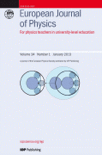
EUROPEAN JOURNAL OF PHYSICS
Charting New Territories in Scientific InquiryEuropean Journal of Physics, published by IOP Publishing Ltd, is a premier international journal serving the diverse field of physics and astronomy. With a commitment to advancing scientific knowledge since its inception in 1980, the journal provides a platform for original research articles, reviews, and topical discussions in various domains, including theoretical and experimental physics. Operating out of the United Kingdom, the journal has achieved a commendable Q2 ranking in the Physics and Astronomy (miscellaneous) category for 2023, reflecting its robust influence in the academic community, alongside a notable Scopus Rank that underscores its relevance in both the Social Sciences and General Physics and Astronomy fields. Although it does not currently offer open access, the journal's traditional publication model ensures rigorous peer review, maintaining high scholarly standards that are imperative for researchers, professionals, and students striving to stay ahead in their respective fields. Don't miss the opportunity to engage with cutting-edge research and contribute to the ongoing dialogue in physics by accessing this vital resource.
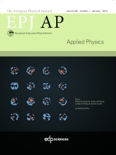
EUROPEAN PHYSICAL JOURNAL-APPLIED PHYSICS
Connecting Researchers to Pioneering DiscoveriesEUROPEAN PHYSICAL JOURNAL-APPLIED PHYSICS, published by EDP SCIENCES S A in France, serves as a vital platform for the dissemination of cutting-edge research in the fields of condensed matter physics, electronic, optical and magnetic materials, and instrumentation. With an ISSN of 1286-0042 and E-ISSN of 1286-0050, this journal has been a valuable resource for researchers since its inception in 1998, aiming to foster innovation and dialogue among professionals and academics alike. Featuring an impact factor that reflects its growing influence, the journal is currently ranked in the Q4 quartile for several related categories in 2023, underscoring its ongoing contributions to the scientific community despite its relatively competitive positioning. Access to the journal is available through various Open Access options, ensuring that pioneering research is readily accessible to all. As it continues to evolve towards its 2024 objectives, EUROPEAN PHYSICAL JOURNAL-APPLIED PHYSICS remains dedicated to advancing knowledge and facilitating collaboration in applied physics, making it an essential resource for students, researchers, and professionals dedicated to exploring the forefront of physical sciences.

SEMICONDUCTORS
Fostering breakthroughs in semiconductor technology.SEMICONDUCTORS, published by PLEIADES PUBLISHING INC, is a prominent journal that provides a platform for researchers and professionals in the fields of Atomic and Molecular Physics, Condensed Matter Physics, and Electronic, Optical and Magnetic Materials. With an ISSN of 1063-7826 and an E-ISSN of 1090-6479, the journal has been diligently disseminating knowledge since its inception in 1996 and continues to pave the way for innovative research until 2024. Although currently unclassified in the Open Access model, its influence is underscored by its rankings in Scopus, where it ranks in the 21st-22nd percentile across critical scientific categories. SEMICONDUCTORS serves as an essential resource for cutting-edge research, fostering a greater understanding of semiconductor materials and their applications, thereby assisting the scientific community in pushing the boundaries of technology and innovation.
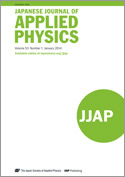
JAPANESE JOURNAL OF APPLIED PHYSICS
Pioneering Research for Practical ApplicationsThe Japanese Journal of Applied Physics is a premier publication in the field of applied physics, offering a platform for researchers and professionals to present their findings and innovations. Published by IOP Publishing Ltd, this esteemed journal has been active since 1963 and continues to contribute significantly to the understanding and advancement of applied physics across diverse applications. The journal is recognized for its rigorous peer-review process and high-quality publications, evidenced by its 2023 ranking of Q2 in Engineering (Miscellaneous) and Q3 in Physics and Astronomy (Miscellaneous). With an accessible ISSN of 0021-4922 and E-ISSN 1347-4065, the journal cultivates a global readership, fostering collaboration and innovation within the scientific community. Although the journal does not currently offer open access options, its valuable insights into the latest technological advancements and theoretical developments remain crucial for students, researchers, and industry professionals alike. By bridging the gap between fundamental physics and practical applications, the Japanese Journal of Applied Physics plays a vital role in shaping the future of applied sciences in Japan and beyond.
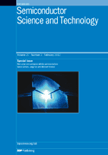
SEMICONDUCTOR SCIENCE AND TECHNOLOGY
Pioneering discoveries in condensed matter physics and technology.Semiconductor Science and Technology is a pivotal journal in the fields of condensed matter physics, electrical and electronic engineering, and materials science, published by IOP Publishing Ltd. With an ISSN of 0268-1242 and an E-ISSN of 1361-6641, this esteemed journal has been disseminating groundbreaking research since 1986 and is set to continue through 2024. Recognized in the latest categorizations, it holds a notable Q2 ranking in Condensed Matter Physics, Electrical and Electronic Engineering, and Materials Chemistry, alongside a Q3 ranking in Electronic, Optical, and Magnetic Materials, highlighting its significant contribution to the advancement of these disciplines. Although it does not operate under an open access model, the journal provides critical access options for researchers and professionals seeking to foster innovation and collaboration within the semiconductor community. As a vital resource, Semiconductor Science and Technology not only supports the dissemination of high-quality research but also serves as a platform for emerging trends and developments that are shaping the future of semiconductor technology.

Journal of Advanced Dielectrics
Bridging Theory and Application in Material ScienceThe Journal of Advanced Dielectrics, published by World Scientific Publishing Co Pte Ltd, is a pivotal open-access platform since 2014 dedicated to advancing research in the fields of dielectrics, ceramics, and composites. Based in Singapore, this journal aims to bridge the gap between theoretical developments and practical applications in Electrical and Electronic Engineering, Condensed Matter Physics, and Electronic, Optical, and Magnetic Materials. With an impressive classification in the 2023 Quartile Rankings indicating its significance within its categories, and notable Scopus Rankings that highlight its impact and relevance, this journal serves as a vital resource for scholars and professionals committed to cutting-edge research and innovation. As it continues to flourish through the converging years from 2015 to 2024, the Journal of Advanced Dielectrics stands as an essential conduit for the dissemination of knowledge in advanced material sciences, making it an indispensable asset for today's research community.
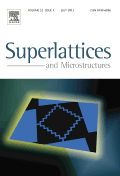
SUPERLATTICES AND MICROSTRUCTURES
Bridging theory and application in advanced materials science.SUPERLATTICES AND MICROSTRUCTURES is a premier journal dedicated to the exploration and dissemination of cutting-edge research in the fields of Condensed Matter Physics, Electrical and Electronic Engineering, and Materials Science. Published by Academic Press Ltd - Elsevier Science Ltd, this journal has established itself as an important platform for scholars and industry professionals to share their findings related to the design, fabrication, and application of superlattices and microstructured materials. With a commendable impact factor reflected in its rankings—positioned within the top quartile in Physics and Astronomy as well as Electrical and Electronic Engineering—it offers high visibility and influence in the academic community. The journal has covered significant contributions from 1985 to 2022, although access options have transitioned, making staying current essential for researchers and practitioners alike. This journal not only serves as a repository of knowledge but also fosters collaboration and innovation in materials science and related disciplines.

APPLIED PHYSICS A-MATERIALS SCIENCE & PROCESSING
Unveiling Cutting-edge Discoveries in Applied PhysicsApplied Physics A: Materials Science & Processing, published by Springer Heidelberg, is an esteemed academic journal that has been at the forefront of innovative research since its establishment in 1995. With a strong focus on the intersection of physics, materials science, and engineering, this journal explores cutting-edge developments and applications that influence contemporary materials research. Categorized in the Q2 quartile across both Chemistry and Materials Science, it boasts respectable rankings in Scopus, affirming its influence and reach within the academic community. Although primarily a subscription-based journal, it is dedicated to disseminating high-quality research findings that advance our understanding in these fields. Researchers, professionals, and students alike can benefit from the journal's commitment to publishing comprehensive studies, methodological advancements, and insightful reviews that push the boundaries of knowledge in materials science.